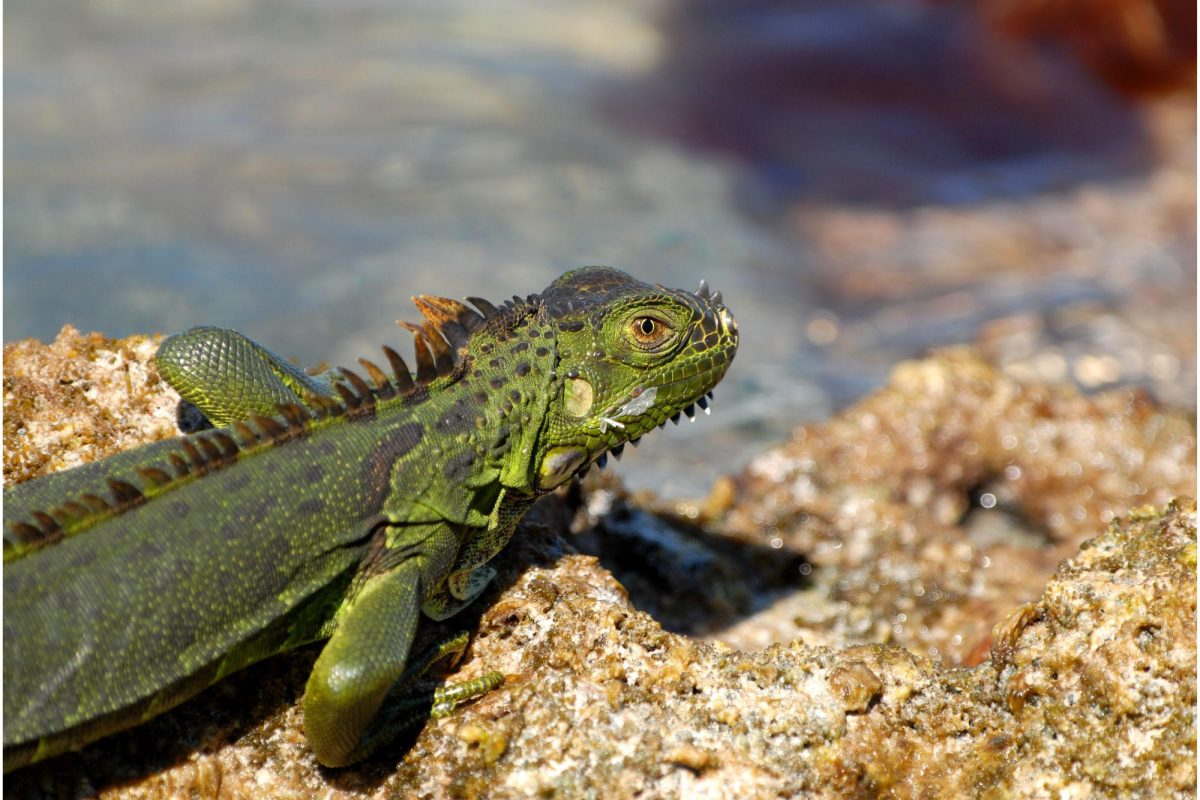The green iguana is indigenous to South and Central America, Mexico, and certain Caribbean islands, but due to their popularity as pets, they have become invasive to South Florida, Hawaii, Texas, and Puerto Rico.
A Brown University biologist calls for a more balanced view of invasive species.
Invasive species, also known as non-native species, have become much more well-known over the last 50 years, to the point that everybody with a green conscience has heard of them and their detrimental effects.
The advantages of non-native species are less well known, and biologist Dov Sax from Brown University thinks that has to change.
Sax and two co-authors pointed out that the majority of research on non-native species concentrates on their detrimental effects in a review article that was recently published in the journal Trends in Ecology and Evolution. They said that long-standing prejudices against non-native species in the scientific literature had muddled the scientific process and made it more difficult for the public to understand. The authors of the new paper attempt to shift the focus to explore the benefits of non-native species in order to have a more balanced discussion.
“Positive impacts of non-native species are often explained as serendipitous surprises — the sort of thing that people might expect to happen every once in a while, in special circumstances,” said Sax, a professor of environment and society, and of ecology, evolution and organismal biology. “Our new paper argues that the positive impacts of non-native species are neither unexpected nor rare, but instead common, important, and often of large magnitude.”
The study, according to Sax, a member of the Institute at Brown for Environment and Society, applies a recent framework that looks at the benefits of biodiversity for people and nature to non-native species, illuminating the frequent, diverse, and important ways that non-native species provide positive value for people and nature.
“We want to provide a framework for the way that scientists can think about non-native species constructively going forward and explicitly document their benefits,” Sax said. “It’s only then that we’ll be able to accurately and fully compare and contrast them in order to perform the kind of cost-benefit analyses that can be truly helpful in making policy decisions.”
The authors, who also included Julian Olden from the University of Washington and Martin Schlaepfer from the University of Geneva, acknowledged that certain non-native species, such as introduced pathogens and agricultural pests, have undeniably high net costs. However, they pointed out that the majority of domesticated species, including crops like wheat and tomatoes, textiles like cotton and wool, and animals like dogs and goldfish who are kept as pets, provide significant net advantages to human society. They concentrated on so-called “wild” or “naturalized” species, which are species that are not directly controlled by humans, noting that many of these species have both negative and positive effects on both people and the environment.
As one example of a non-native species with underappreciated benefits, Sax cited the earthworm. While they can negatively change forest ecosystems, Sax said that earthworms can also augment organic agriculture: Some research has shown that when earthworms are present, there can be a 25% increase in agricultural productivity. The resulting decrease in food costs and increased ability to feed people is a direct economic benefit, Sax said.
Sax also extolled the unexpected benefits of another non-native species — brown trout. Looking at New Zealand as an example, he said most of the non-native species that have invaded the country have negative consequences, and residents, therefore, focus on eradicating them. Yet the nation has effectively embraced brown trout, Sax said: New Zealanders value the nutritional benefits of eating brown trout and the recreational benefits of fishing brown trout so much that they’ve established new environmental regulations to protect the species within their waters.
The framework the authors used to consider non-native species describes a comprehensive range of nature-based values, including intrinsic, instrumental and relational values.
“We posit that this framework provides a useful topology for considering the diverse array of ways that non-natives provide value and use this framework here to illustrate representative, but not exhaustive, examples of these values from diverse ecosystems and regions,” they wrote.
The authors advocate using the same framework often used to talk about the benefits of nature, especially the benefit of biodiversity, and apply that to non-native species. “How people relate to nature, to the intrinsic value of nature, to the ecosystem services, to the provisioning of resources — these are all things that we value in native species, and there are also ways to see that non-native species are contributing to these benefits, too,” Sax said. “It’s not like there’s some inherent trade-off: Non-natives aren’t the boogie man.”
For example, non-native species can be a leading cause of species extinctions, but also contribute, through their own migration, to regional biodiversity; they can reduce certain ecosystem functions, such as water clarity, while increasing others, such as erosion control; they can provide new resources, such as recreational hunting and fishing opportunities.
Yet because of the research bias against non-native species that focuses on threats and harm, Sax said that the net consequences of most non-native species are less certain. That is why he and his co-authors call for a re-evaluation of non-native species, informed by data.
“We argue that long-standing biases against non-native species within the literature have clouded the scientific process and hampered policy advances and sound public understanding,” they wrote. “Future research should consider both costs and benefits of non-native species.”
Reference: “Valuing the contributions of non-native species to people and nature” by Dov F. Sax, Martin A. Schlaepfer and Julian D. Olden, 6 October 2022, Trends in Ecology and Evolution.
DOI: 10.1016/j.tree.2022.08.005
Share your story or advertise with us: Whatsapp: +2347068606071 Email: info@newspotng.com















